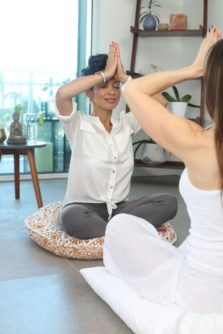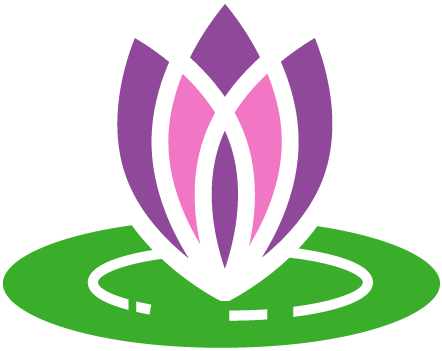
Yoga for Anxiety
By Juanita Davis, LCSW, RYT 200
We all feel anxious from time to time, but for some anxiety gets so bad that it interferes with day-to-day activities. It becomes fear that something awful might happen, restlessness that makes relaxing or even sleep virtually impossible, apprehension that paralyzes and prevents you from pursuing new opportunities, and thoughts that fire at such rapid speeds that it’s hard to concentrate. These are all symptoms or ways in which anxiety can show up. However, because the connection between mind and body is so intricate, anxiety can also manifest as physiological symptoms including shortness of breath, heart palpitations, muscle tension and indigestion to name a few. These symptoms are our body’s Fight or Flight response or stress response.
While traditional psychotherapy is effective at treating anxiety, it can fall short in that it doesn’t address these physiological symptoms of anxiety. To do that you need treatment modalities that address the body, not just the mind. My yoga teacher once said “The issues are in the tissues” and what he meant by that is that we hold our problems, weather it’s trauma, anxiety, or depression in our physical bodies. Therefore, we need body-centered approaches like yoga to help heal those issues.
What is yoga and how can it help? Yoga originated thousands of years ago and involves an extensive system of poses, called Asanas, meditation, and breathing techniques called Pranayama. This system engages both mind and body and can promote feelings of good mental, physical and emotional health. Various asana and breathing techniques can reduce the body’s stress response by decreasing stress hormones such as Cortisol and Adrenaline which the body produces more of when it’s overwhelmed and stressed. Yoga reduces muscle tension and helps to remove toxins from the body which then stabilizes the body’s response to stress. In addition, yoga brings our attention to the present moment, and because we know that most anxiety is future oriented, having the attention focused on the present reduces it.
While I am not suggesting you attend any ole yoga studio to treat your anxiety, I am suggesting that you find a qualified yoga-psychotherapist (a therapist who combines yoga and psychotherapy), or a qualified somatic therapist (a therapist specializing in body-centered therapy) to help you.
What does a session with a yoga-psychotherapist look like? While I cannot speak for all therapists who combine yoga into their practice, a session with me combines psychotherapy, usually Cognitive Behavioral Therapy with gentle yoga poses/asana, breathing exercises, and guided meditation.
Check out the three tips below to help manage anxiety:
1. 4:4 Count Breath
• Sit quietly and comfortably in easy pose (cross legged) or in a chair with both feet on the floor if that’s more comfortable.
• Take a few deep breaths to center yourself.
• Focus at the point between your eyebrows.
• Bring your attention to the breath.
• Notice where you might be holding on to tension or stress and try to relax and breathe into those places.
• Inhale for a count of 4 and exhale for a count of 4.
• Continue to breathe like this for at least 5 minutes.
2. Legs Up the Wall
• Begin by sitting with your left side against the wall.
• Using your forearms to keep you propped up begin to gently turn your body to the left and bring your legs up the wall.
• Lower your back to the floor and lie down.
• Rest your shoulders and head on the floor (or your bed if you’re in bed).
• Shift your weight from side to side to bring your bottom closer to the wall so that your body is in the shape of a L.
• Allow your legs to release and relax.
• Close your eyes. Hold for at least 5 minutes taking deep breaths.
3. Shoulder Shrugs
• Sit in easy pose or in a chair with your feet flat on the floor.
• Straighten your posture.
• Close your eyes and bring your focus to the point between your eyebrows.
• Place your hands on your knees.
• Inhale as you shrug your shoulders up.
• Exhale as you shrug your shoulders down.
• Repeat for at least 1 minute, and you can build up to 3-5 minutes.
The content on this website is not intended to diagnose or treat, it is for informational purposes only. Please call our office at 404-618-1040 for an appointment or contact a mental health professional in your local area if you are seeking treatment.
